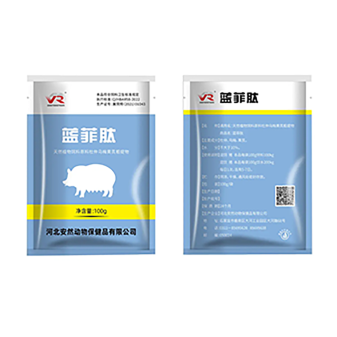- Afrikaans
- Albanian
- Amharic
- Arabic
- Armenian
- Azerbaijani
- Basque
- Belarusian
- Bengali
- Bosnian
- Bulgarian
- Catalan
- Cebuano
- Corsican
- Croatian
- Czech
- Danish
- Dutch
- English
- Esperanto
- Estonian
- Finnish
- French
- Frisian
- Galician
- Georgian
- German
- Greek
- Gujarati
- Haitian Creole
- hausa
- hawaiian
- Hebrew
- Hindi
- Miao
- Hungarian
- Icelandic
- igbo
- Indonesian
- irish
- Italian
- Japanese
- Javanese
- Kannada
- kazakh
- Khmer
- Rwandese
- Korean
- Kurdish
- Kyrgyz
- Lao
- Latin
- Latvian
- Lithuanian
- Luxembourgish
- Macedonian
- Malgashi
- Malay
- Malayalam
- Maltese
- Maori
- Marathi
- Mongolian
- Myanmar
- Nepali
- Norwegian
- Norwegian
- Occitan
- Pashto
- Persian
- Polish
- Portuguese
- Punjabi
- Romanian
- Russian
- Samoan
- Scottish Gaelic
- Serbian
- Sesotho
- Shona
- Sindhi
- Sinhala
- Slovak
- Slovenian
- Somali
- Spanish
- Sundanese
- Swahili
- Swedish
- Tagalog
- Tajik
- Tamil
- Tatar
- Telugu
- Thai
- Turkish
- Turkmen
- Ukrainian
- Urdu
- Uighur
- Uzbek
- Vietnamese
- Welsh
- Bantu
- Yiddish
- Yoruba
- Zulu
9 月 . 21, 2024 22:58 Back to list
common disinfectants used in veterinary practice
Common Disinfectants Used in Veterinary Practice
Disinfectants play a vital role in maintaining hygiene and preventing the spread of infectious diseases in veterinary settings. The use of effective disinfectants is crucial not only for the health of animals but also for that of the staff and the broader community. In veterinary practice, several types of disinfectants are commonly employed, each with specific applications and efficacy against various pathogens.
One of the most widely used disinfectants is sodium hypochlorite, commonly known as bleach. Its broad-spectrum antimicrobial action makes it effective against bacteria, viruses, and fungi. Sodium hypochlorite is particularly useful in environments where contamination is likely, such as kennels and surgical areas. However, care must be taken to dilute it appropriately, as high concentrations can be corrosive and harmful to surfaces and personnel. It is also important to allow adequate contact time to ensure its effectiveness.
Another significant disinfectant in veterinary practice is quaternary ammonium compounds (quats). These are favored for their residual activity and relative safety for use around animals and staff. Quats are effective against many gram-positive and some gram-negative bacteria, but they have limited efficacy against certain viruses and fungi. They are often used in routine cleaning procedures and can be found in various veterinary products, including surface sprays and foams.
common disinfectants used in veterinary practice

Hydrogen peroxide is another common disinfectant used in veterinary medicine. Its oxidative properties allow it to effectively kill bacteria, viruses, and fungi upon contact. Hydrogen peroxide is particularly valuable in cleaning organic material, as it breaks down into water and oxygen, posing minimal risk of toxicity. However, its effectiveness is reduced in the presence of organic matter and may require thorough cleaning prior to application.
In recent years, accelerated hydrogen peroxide formulations have gained popularity due to their rapid action and broad-spectrum efficacy. These formulations are effective against a wide range of pathogens, including harder-to-kill viruses like parvovirus, which is a concern in canine settings. The fast-acting nature of these disinfectants means they can be applied in busy environments without long waiting times for surface drying.
Lastly, phenolic compounds are used in certain veterinary practices, especially for disinfecting equipment and surfaces exposed to resistant bacteria. While they are potent disinfectants, phenolics can be toxic to cats and should be used with caution in environments where feline patients are present.
In conclusion, the selection of disinfectants in veterinary practice is critical to controlling infection and ensuring a safe environment for animals and caregivers alike. A thorough understanding of the properties and appropriate use of these disinfectants is essential for effective infection control protocols. By implementing a systematic approach to disinfection, veterinary practices can significantly reduce the transmission of diseases and promote overall health in animal care settings.
-
The Power of Radix Isatidis Extract for Your Health and Wellness
NewsOct.29,2024
-
Neomycin Sulfate Soluble Powder: A Versatile Solution for Pet Health
NewsOct.29,2024
-
Lincomycin Hydrochloride Soluble Powder – The Essential Solution
NewsOct.29,2024
-
Garamycin Gentamicin Sulfate for Effective Infection Control
NewsOct.29,2024
-
Doxycycline Hyclate Soluble Powder: Your Antibiotic Needs
NewsOct.29,2024
-
Tilmicosin Premix: The Ultimate Solution for Poultry Health
NewsOct.29,2024













